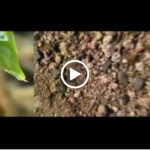Hau to be erotic: going deeper into the gift economy
Gifts have the function of bonding communities together. … If your entire life is nothing but money transactions, … then you don’t have community because you don’t need anybody.
— Charles Eisenstein, Amsterday Sept 2009 http://youtu.be/cS07gM74tww
— Charles Eisenstein, Amsterday Sept 2009 http://youtu.be/cS07gM74tww
My dad just gave me a brand-new sawzall reciprocating saw. Yesterday its maiden voyage helped to repair the rainwater harvesting tanks at the community garden. In the spirit of gifting (in Maori they call it hau), with this “second giving” the sawzall entered into the gift economy.
From my dad’s very conservative, capitalist view, he probably intended the sawzall to increase my personal possessions, my pile of Stuff, my personal wealth. I should squirrel it away in my garage, only bringing it out of its box when I need it for my own house. My neighbor has his own sawzall; that’s the capitalistic way. We – my neighbor and I – should each be seeking to build and amass our own personal capital base. And in this conventional paradigm the inflow of a brand-new sawzall would be a boon to me, having increased my capital.
Erotic commerce
When I first heard about a “gift economy” I thought it simply meant giving things to each other. Like you give trinkets for birthday presents and old clothes to Goodwill Industries. How could this be an “economy”? Little did I realize that a gifting culture brings with it a whole new perspective on values, capital, who is notable within the social order, connections and interdependency, and what is important to people.
In his 1979 book The Gift, Lewis Hyde speaks of gift exchange as ‘erotic’ commerce. He is referring to
eros, the principle of attraction, union, involvement which binds together.
By contrast, a market economy is an example of logos: reason and logic. Without gift exchange we are without eros, that basic element that attracts us to others and binds us together. Charles Eisenstein puts it even more baldly in the quotation above: without gifting we are without community.
When my dad gave me the sawzall, that first transaction could still have gone either way: into my personal capital or into the gift culture. The second transaction – my choice to hand the sawzall over for a friend’s use – is the transaction which defines it as a gift. The hauhas been multiplied. Rather than holding it close, I have sought to multiply its spirit, and distribute that spirit, spreading it around my community. My sawzall-borrowing friend multiplied it further, because he used the tool to make repairs in a garden that grows food for the needy and is open to the general public. The hau extended still further.
Baby, don’t stop
Dictum: One man’s gift must not become another man’s capital.
Corollary: The increase that comes of gift exchange must remain a gift and not be kept as if it were the return on private capital.
— from Lewis Hyde
Hyde draws a distinction between the object itself and the multiplication of the gift. While the physical sawzall did eventually return to my garage for temporary storage, the benefit from its use continued to travel and flowfurther within the community. My friend feels gratitude for use of the tool; feelings of goodwill flow from others who heard about the transaction; people now know a sawzall is available within the neighborhood; the community garden tanks are now operational; and public education continues.
Contrast that with the capitalist concept, so aptly named “retained earnings.” The gift would increase my receipts or “net income” for the year, which accordingly increases my personal capital and net worth. I’ve swallowed it up as Mine. The spirit of the transaction comes to an abrupt stop.
Giving it Away
In cultures where gifting is a common practice, a man’s net worth is determined by how much he gives away. Rather than how much he has retained, his status within the community is defined by his control of distribution– how widely and generously he has shared what he had.
It brings to mind a statistic from a Kim Klein book about conventional fundraising. Klein says the majority of gifts to nonprofits come from households with incomes of less than $90,000 — the middle-class, working-class, and poor. Her statistic is an indicator of a different paradigm about assets and property, and Hyde’s examples help to explain it.
Hyde tells a story from a kinship network in an urban ghetto neighborhood: A couple received some inheritance money. Within six weeks the money was distributed to a variety of purposes around the kinship network. From a capitalist’s viewpoint (logos), the money was “an influx of capital,” that could have been put toward buying a house or capital investment; instead, the couple “wasted” it and it was “gone.”
The couple’s behavior came from a different paradigm: one of eros, union, involvement. They bought winter coats for nieces and nephews who needed them; they transported family members to the sickbed of one relative; they paid the funeral expenses for another. From a gifting viewpoint, the inheritance windfall helped to shore up a vast network of people, and brought the couple much deeper integration into their community.
Klein’s statistic is a sign that “the 99%” still understands the gift paradigm. Despite sparkly TV commercials to the contrary, capitalism hasn’t won us over completely. Some threads of gift culture understanding do still linger throughout our collective culture. Your marching orders are to find and cultivate these fine threads, and bring them to the forefront.
How do we do this? Continued at “A Gratitude Economy”
You might also like:
Previous
Getting Wise about Water
Newer


